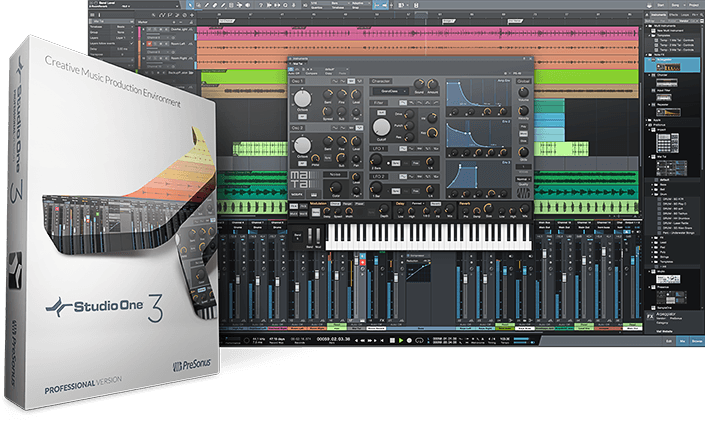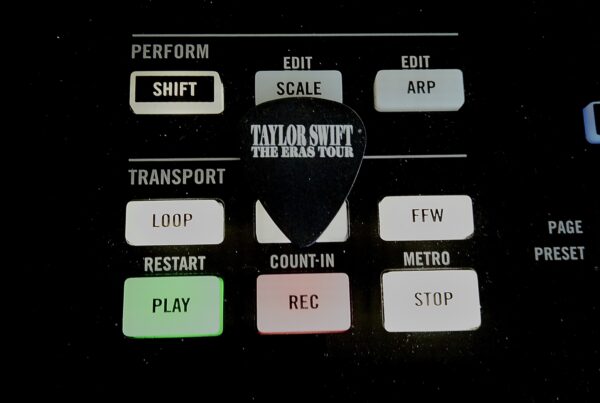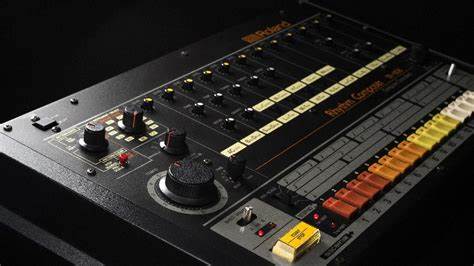by Peter Fox and Sam Ashley
Everyone is aware of debates over the DAW, so we have decided to pit three heavyweights in the world of audio software against each other to find out once and for all who will reign supreme (in our humble opinion).
Pro Tools
Pro Tools is one of the oldest DAWs out there. Developed by Avid, it is currently on its twelfth version. Due to its age and its reputation it is one of, if not the, most popular DAWs out there right now. You can find it a lot in studios all over the world with many people considering it the industry standard
When we conducted our survey of the DAWs most widely used, Pro Tools was frequently described as second to none for tracking. We can definitely see why people would use it for that purpose. It also offers a lot of good functionality for editing such as clip gain and specific features for mixing surround sound and sounds for films. A small feature that we really like in Pro Tools is the comment section on the mixer and we really wish that more DAWs had this. It’s extremely useful when you have a bit too much information to put in the title, such as microphone placement and the polar pattern selected. There are plenty of options in Pro Tools for routing and lots of changes in the mixer, which again is great for tracking. However, the feature that stands out most is the cloud collaboration feature. This involves working with people across the globe via cloud based internet. Given the way that people are working nowadays, this is a fantastic feature that enables anyone , anywhere in the world to collaborate on music.
Unfortunately, a big flaw of Pro Tools in comparison to the competition is the price. The regular version of the software is £499.99, far above Logic’s price, and the full version is around a £1000 per year, an enormous sum that doesn’t even include features such as their pitch correction software. It’s extremely powerful but that seems far too much money to us.
We also have a few concerns with Pro Tools. One fairly major one is the GUI. Although this won’t be an issue to a lot of people, to us this software just looks ugly. A re-design and a re-arrange would be nice we feel. The GUI has some strange design choices that we just couldn’t get on with, such as having to jump through hoops to do simple things like solo an auxilary track: it’s very unintuitive.
Logic Pro X
Logic Pro X is Apple’s Digital Audio Workstation. Apple acquired Logic Pro from German software developer C-Lab (later E-magic) in 2002. It is the second most popular DAW according to a survey conducted in 2015. This is many producers’ go-to DAW for creating and mixing.
One advantage Logic Pro has over other DAWs such as Avid’s Pro Tools is the price. Pro Tools is priced at £499.99 whilst Logic Pro is only £199.99. Other than the price Logic has some really great features the other main DAWs are lacking. ‘Drummer’, for example, is a great plug-in which you can programme just by clicking a certain style you want. This is a great tool for singer-songwriters if they cannot play drums: this tool will make writing a drum part a lot easier than trying to painstakingly draw in a part.
Logic Pro X also comes with many high quality instruments, including some really fantastic synthesizers such as the ES2, which has a wide range of different options for creating almost any sound you wish.
Logic Pro X is known for its easy to use and modern looking MIDI Editing. Logic Pro X has really hit the nail on the head with MIDI as no other DAW has really done MIDI as well as Logic. ‘MIDI Draw’for example, provides a graphical interface that makes it easy to see and edit this type of data. Logic quantisation is a great tool to make sure your music is in time, with a sophisticated set of options for adjusting the positioning of MIDI notes.
Another great feature about Logic is its modern interface. Logic’s stunning and innovative design makes it stand out from the other DAWs. Its simple design makes it easy to get around and its comprehensive shortcuts make for great productivity and workflow. Some people feel its simplicity is its downfall by being too much like Garageband which is a fairly stripped back DAW compared to others. This is really down to preference but Logic still competes with Pro Tools to a very good standard.
Studio One 3
Studio One is a fairly new DAW from PreSonus, an already well established company in the world of audio. It came out in 2009 which definitely makes it new especially in comparison to the others in this list. It is growing in popularity with each release, with more producers adopting it all the time.
One big advantage over something like Logic is that it is cross-compatible with different operating systems. This means that it will work on both Mac and PC, making it easy to work with people regardless of the computer hardware they use. Another main selling point we love is the workflow that it advertises, for example, the ‘Drag and drop’ facility. It makes great sense to work this way when the rest of your computer activity is undertaken so similarly. It provides a much cleaner and less cluttered interface. We also really like the ‘Project page’ that is offered. This is something geared towards mastering, a specific page that is for putting together projects such as albums or EPs. It opens with a big metering section with options to put plugins on every song or just certain ones, you can also set the fade times between tracks and it makes it easy to check overall levels. Also, the fact that it is new means that updates tend to come out pretty frequently with an active development team. In the past things like ‘Event FX’ have been added through updates, where effects can be put on just a section of audio, which is something Apple have adopted too now in Logic, but more than year after PreSonus introduced it.
Like Logic, it’s good value for money, coming with quite a lot of instruments and high quality stock plugins. It’s still double the price of Logic Pro X for the full version though, so not quite as good value. Studio One also offers a free version and a kind of middle ground version that is limited but comes with a lot of keyboards and other gear.
The main problem at the moment is that not many people have heard of Studio One, let alone used it. This means that collaborating on projects can prove fairly difficult. Although we haven’t experienced this ourselves, some users have complained about things such as leaking RAM and stuttering issues. Another disadvantage is that it can be fairly hard to work with on a small screen due to its single window workflow. It works mosrt effectively when you have a nice big high resolution display but it makes things difficult to sort if you’re on an older laptop.
In our opinion, a lot of what we’ve discussed here is down to individual preference and everyone will have a different view on which DAW is the best. Out of the three outlined above, our choice would be Studio One 3.



